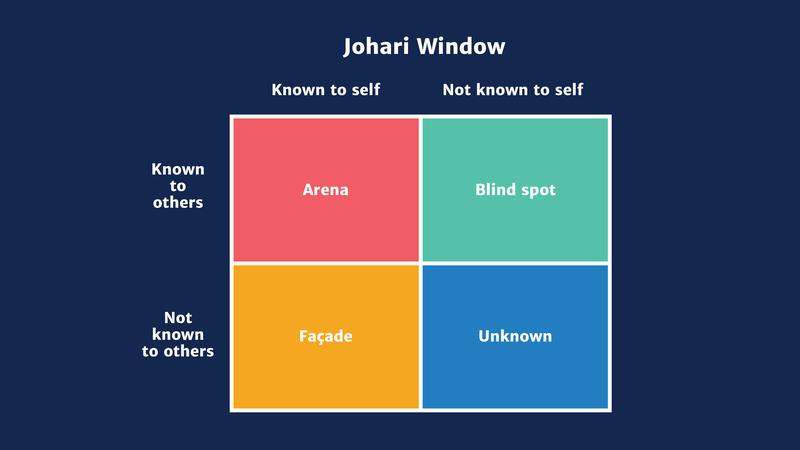How To Identify Skill Gaps as a Product Manager (And More Importantly, How To Fill Them)

Is there such a thing as the perfect product manager?
No, there isn’t.
Even the most stellar and successful PMs won’t be perfect — that is, they won’t be the very best at everything that the product management role requires.
That’s because even when you’re at the very top of your game, you’ll still have some skill gaps.
The PM role requires such a blend of competencies and know-how. There are just not enough hours in the day to perfect it all.

That being said, there’s no harm in a little professional development. So, in this article, we’ll talk you through the best ways to identify your product management skill gaps and what you can do to fill them.
But not with the ambition of being perfect, but being the best PM that you can be.
Let’s take it from the top — what are the skills a product manager needs to have?
The PM role is a multifaceted one. One minute you’re debating the technical details of a demanding new build, the next, you’re leading a strategic vision meeting and organizing your team’s workflow.

Because a PM’s daily tasks require them to wear many hats, great product managers can quickly switch between tasks and balance hard skills — like data analysis — with soft skills, such as empathy and interpersonal communication.
You’ll also need quick problem-solving skills and time management capability to map your team’s resources, ensuring you not only deliver your product to the deadline but that no one reaches burnout as a result!
(That last bit is crucial if you want a happy and successful career as a PM!)
The thing is: not every PM will have a natural aptitude or necessary experience to nail the most important aspects of the role. But, take it from us, many of these skills can be learned and developed.
Let’s explore how…
You can identify, then fill, your skill gaps in 3 easy steps…
1. Figure out what you don’t know
Before you can kick off your professional development mission, you need to know where you’re headed.
And “I want to be a better product manager” won’t cut it.
You need to hone in on exactly what that means for you by understanding which of your PM skills are currently underdeveloped.
Luckily, there are plenty of frameworks, models, and self-assessment practices that will aid this process. Firstly: the Johari Window.

This self-assessment exercise started life back in the 50s as a way of understanding an individual’s relationship with themselves and other people.
But with a few hacks here and there, it’s actually the perfect way to get started on your skills analysis.
In essence, the Johari Window is a way of exploring your skillset in four quadrants: open, hidden, blind spot, and unknown. And it works by asking yourself the following questions:
What PM skills do I, and others in my team, know I have? — Open
What PM skills do I (honestly) know I’m missing, but I don’t let this show to my team? — Hidden
Are there any PM skills that my team would say I have or don’t have, but I don’t agree with or know it? — Blindspot
Are there any skills that I’ve never even considered to be relevant as a PM? — Unknown
Now, as you can see, it’s not super easy to dive right in and just answer all these questions. Self-development takes time, energy, and work if you want to maximize its potential. Rush through it, or approach without structure, and you’ll be doing more navel-gazing than good.
But you can quite easily explore the Open and Hidden quadrants of the Johari Window on your own. Either using your own methodology or skills analysis worksheet like this one…
Objectively write down a list of the most important PM skills and then assess your competency on a four-point scale: 4 = excellent, 3 = good, 2 = needs some improvement, and 1 = needs much improvement.

By doing so, you’ll quickly reveal where you’re nailing it as a product manager and where you’ve got some space to grow.
Then, you should rank the skills you’ve marked as 2s and 1s in a quadrant of importance versus difficulty.
From there, you can start with those skills which are of high importance to develop but aren’t so difficult to achieve. Picking off the low-hanging fruit and getting quick wins will motivate you to keep on going!
What’s more: as a PM, you can think of this as your skillset strategic roadmap, including actions required, start and end dates, any related costs, and what value it will deliver. You can go one step ahead and create a visual roadmap to get an overview of your skillsets.
So that’s two quadrants ticked off the list. Now how do we begin to understand what we don’t necessarily know about ourselves to find our Blindspot and Unknown opportunities?
The simple answer is feedback.

True, feedback can be intimidating.
Very few people enjoy opening themselves up to judgment from others.
The thing is, feedback from your team is essential if you are to grow as a product manager — as Bill Gates said: “We all need people who will give us feedback. That's how we improve.”
It’s better to think of your product management career as ever-evolving, which means feedback is really nothing to be afraid of.
It’s all part of design thinking; doing, learning, and adapting to do better.
And this is exactly how you should position it to your colleagues when you ask them for feedback on your PM skills and knowledge gaps.
What skills do they believe you embody? What are your areas for development? And how many of these can you cross-reference with your own insights?
It’s those nuggets of truth that you may not have recognized yourself, which will lead to better Blindspot and Unknown understanding.
Now that you’ve taken several routes to identify your skill gaps, it’s time to fill them…
2. Maintain a growth mindset whilst you seek opportunities to learn
In her book, ‘Mindset: The New Psychology of Success,’ Carol Dweck talks about the importance of having a ‘growth mindset’ — that is, acknowledging that skills and intelligence can be developed if we embrace challenges, put in the effort, and learn from criticism.
As a PM on the road to professional development, it’s essential to maintain a growth mindset as you go.
Because the alternative — a ‘fixed mindset’ — causes us to avoid challenges, give up easily and ignore useful constructive feedback.
A growth mindset is also how you’ll overcome that tricksy knowing-doing gap, too. Even if you’re not used to calling it by its name, we are all guilty of knowing-doing gap behavior — dragging our heels and failing to apply some new-found knowledge.
When it comes to skillset building, this gap will show itself in a failure to spot and take opportunities you can learn from.
So your team said you could use some negotiation training? Then find some. Do you want to be more confident with code? Ask a colleague to teach you.

Never forget to ask yourself: what’s standing between me and the goal of developing this skill?
Then take relevant action to overcome that obstacle.
3. Know that you don’t need to know everything
Finally, and perhaps most importantly, you have to accept that you won’t ever know everything.
And that is a-okay, my friend.
The truth is: knowledge or skill gaps aren’t weaknesses — far from it, actually.
If you can put your ego aside and avoid the need to be the smartest person in the room, you’ll be a much stronger product manager for it.
After all, as PM, it’s your job to champion the product and the user: not yourself. So if you know full-well that you’re not best placed to take the lead on something, then pass it on to whoever will run with it and really excel.
That way, not only will you be putting the best possible resources into your product build, you’ll also be exhibiting fantastic leadership ability too.

Using “we” language — “What can we do about this?”, “What do we think is the necessary next step?” — is super empowering for the team to hear, and it’s got the added benefit of subtly bouncing questions you don’t know the answer to.
The best product managers know their skills, grow their skills, and show that no one’s got it all.
Whilst there’s no such thing as the perfect product manager, we’ve all got room to upgrade.
So take a step back to assess where you’re at right now and where you’d like to go. Then embrace every opportunity you can for growth — including delegation and parking your ego when it starts to get in the way.
There’s really no time like the present. So, get cracking.
Valentin Firak

Read also



Experience the new way of doing product management

Experience the new way of doing product management




